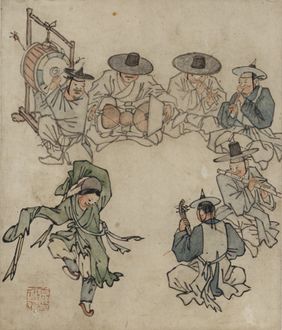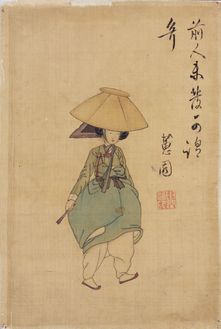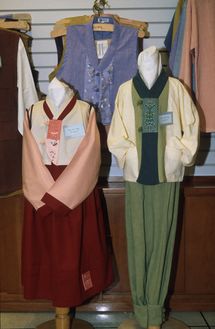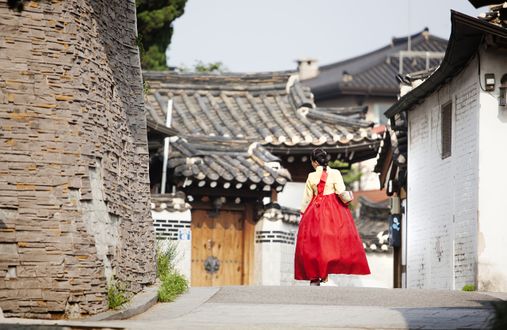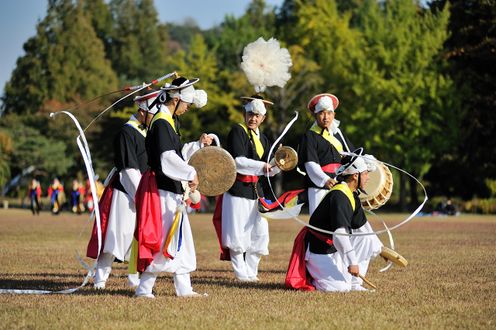Beauty in Motion - Traditional Korean Clothing
Traditional Korean clothing, called hanbok, comes in two parts: a top (jeogori) and bottom – pants (baji) for men and a skirt (chima) for women. All elements are wrap-style and fastened with fabric ties which form a one-looped ribbon in the front or a fabric belt. In addition to this basic top-bottom pairing are various under garments to give the clothing its silhouette, outer wear to show status when going out or keep warm in winter, and accessories including headwear and footwear. The multi-layered, wrapped, and ribbon-tied elements make hanbok particularly beautiful when in motion – when walking, dancing, or met with a breeze.
Lighter hemp and ramie fabrics were worn in summer, while in winter, heavier cotton and fur-lined quilted fabrics were worn. Silk was worn by upper classes and royalty. The basic pieces of hanbok were white, though royalty, upper classes, and entertainers wore colorful outer layers; nonetheless,the connection between Korea and white clothing was so strong that Koreans were often called the "white-clothed people." Colored fabric was solid apart from embroidery or gold leaf and drew upon the basic five colors: white, black, yellow, red, and blue/green.
Traditionally, there were three kinds of attire: official, ritual, and everyday. Official attire included the clothing of royals and government officials, while ritual clothing was reserved for weddings, funerals, and other ceremonies. Official clothing had influence from the Mongols in the Goryeo period and Ming and Qing China during the Joseon period. Markers of social status, regulated in part by the government, included fabric material, fabric color, embroidery (jasu), accessories (jangsingu), headwear, hair style, and more.
Originally, hanbok had been extremely oversized, both in body width and sleeve length. However, by the 19th century women’s tops had shortened and narrowed dramatically, leading to a silhouette that was tight at the top and voluminous at the bottom.
During the 20th century, Western clothing became standard as the hanbok was slowly relegated to the realm of ceremonial wear, worn on by some on holidays or weddings/funerals. However, beginning in the 2010s, a trend of "everyday hanbok" and hanbok rental services gained popularity with youth seeking to reconnect with their heritage. These modern hanbok usually forgo undergarments and the wrap skirt in exchange for a Western-style dress and use Western fabric patterns and fastening methods.
Related Articles
- Points and Curves - Traditional Korean Music
- Document, Depict, Honor, and Express - Traditional Korean Painting
- Honoring Ancestors through Ritual and Music - Ancestral Rituals of the Royal Shrine
- Documenting Ritual and Celebration - The Royal Protocols of the Joseon Dynasty
References
- Academy of Korean Studies. 2010. Cultural Landscapes of Korea. Academy of Korean Studies Press.
- Yoon, Sojung. 2016-12-14. “Koreans' lives, thoughts shown through colors.” Korea.net (Korea Tourism Organization). Retrieved on July 26, 2017 from http://www.korea.net/NewsFocus/History/view?articleId=142653
